Chapter 2: A Roundup of the Best Mind Mapping Tools
by Daniel Schwarz
A mind map is a diagram drawn to help brainstorm ideas without being forced to organize or structure them. Instead, ideas are visually depicted in a hierarchical structure showing the flow and relationship between various ideas as they arise, which allows us to analyze them and recall them with ease.
Let’s take a look at the types of mind maps that are used in UX, and the mind mapping tools that are used to create them.
The Benefits of Mind Mapping
So, why mind map?
Ideation is exciting. Ideas here, ideas there. However, the enthusiasm to conceptualize them can be so invigorating that we don’t take the time to develop upon them or consider other ideas.
Rushing into a concept can take us down a road that’s seemingly harmless but actually quite dangerous. It might get us to finish line, which feels great, but with an end-result that’s mashup of random thoughts and ideas that don’t work together.
By mapping out ideas, we can better understand their:
- value (what’s to be gained by exploring this idea?)
- role (how does the idea fit into the bigger picture?)
- relationships (how does the idea relate to other ideas?)
Eventually we can start to organize these ideas by similarity using a methodology called affinity mapping, which in turn helps us design user-centric mockups and wireframes as opposed to being driven by personal opinion.
How Mind Maps Are Used in UX
Mind maps can evolve into other types of maps with more specific uses. For example, maps that explore the navigational hierarchy and user flows of software systems such as websites, apps, and so on, are referred to as sitemaps. Maps that explore the numerous ways in which customers might interact with a product are called customer journey maps.
Both of these are useful when planning UX design projects—sitemaps for planning wireframes, and customer journey maps for optimizing the online and offline customer experience.
Coggle
- Pricing: $0, $5, or $8 (/month)
- Platform: web
- Pros: simple features, real-time collaboration
- Cons: looks a tad outdated, only accomplishes mind mapping
While many old-school mind mapping tools have become tragically outdated over the years, Coggle is one that’s managed to survive by keeping its focus solely on mind mapping and sporting a fairly simple user interface.
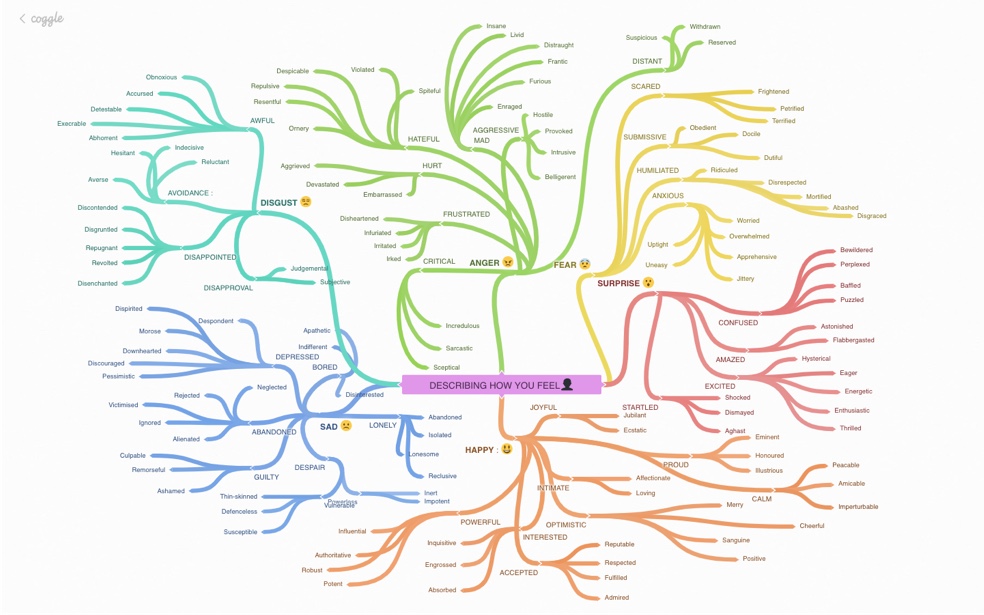
It still looks somewhat dated, but nonetheless is much better looking than veteran tools like FreeMind (which hasn’t been updated in at least four years) and Mind Manager (which looks like it came bundled with Windows 95).
Check out the Coggle Mind Map Gallery, especially the mind map that describes the various types of emotion.
Notice how each emotion is divided by color, then further divided into more specific emotions depicted with capital letters, and then divided once more in a smaller font. It’s totally up to you how visually organize your thoughts and relationships. Coggle lets us explore ideas using images, branches, loops, shapes, and whatever else we need to explore our story.
Stakeholders can weigh in by commenting on mind maps, but also collaborate in real time as if using a whiteboard.
Apart from real-time collaboration, these features are standard and are included in every other tool in this list.
TL;DR
Coggle is everything you need, and nothing you don’t.
XMind
- Pricing: $1.24, $4.58, or $4.99 (/month)
- Platform: web, iOS, Android, macOS, Linux, Windows
- Pros: beautiful maps, very modern, excellent UX
- Cons: only mind mapping, no real-time collaboration
Other than Coggle, XMind is the only mind mapping tool to withstand the test of time, these days taking inspiration from critically acclaimed screen design tools like Sketch to offer a mighty mind mapping experience, but still with a minimalist and intuitive user interface. XMind mind maps look stunning, and while there’s no real-time collaboration, the maps can be shared with stakeholders and exported in a variety of formats.

If you’re looking for a modern-looking mind mapping tool without the bells and whistles, XMind is more than suitable.
Zen Mode
Try “Zen Mode” to remove all UI distractions!
LucidChart
- Pricing: $4.95, $8.95, or $20 (/month)
- Platform: web
- Pros: caters for large teams and all kinds of diagrams
- Cons: one of the more expensive mind mapping tools
LucidChart has the flexibility of Coggle, but with better features for teams (including enterprise) using diagramming in a wide range of scenarios and integrating with a large variety of different third-party tools, most notably the Google Suite.
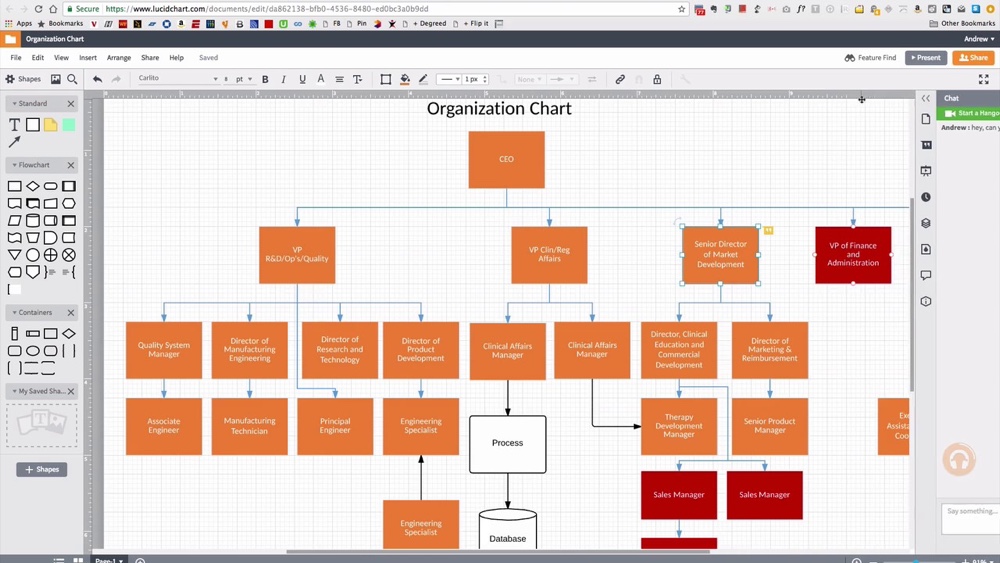
Premium and enterprise-level teams can also expect top-notch privacy, GDPR compliancy, and SAML-based Google SSO security.
As a designer, you could use LucidChart for customer journey maps, product roadmaps, affinity mapping, and of course mind mapping. LucidChart is a serious enterprise option for serious teams, although the costs most certainly match the features.
If you’re a smaller team with smaller needs, Coggle or XMind would be more suitable. If not, LucidChart reviews very well.
MindMeister
- Pricing: $0, $4.99, $8.25, or $12.49 (/month)
- Platform: web
- Pros/Cons: none really; it’s fairly decent all around

MindMeister is LucidChart but with real-time collaboration features and lower costs for enterprise-level teams. While there’s nothing that sets it apart, it’s still a decent choice.
Whimsical
- Pricing: $0, $8, or $12 (/month)
- Platform: web
- Pros: very affordable, also has wireframe tools
- Cons: no integrations or serious collaboration tools
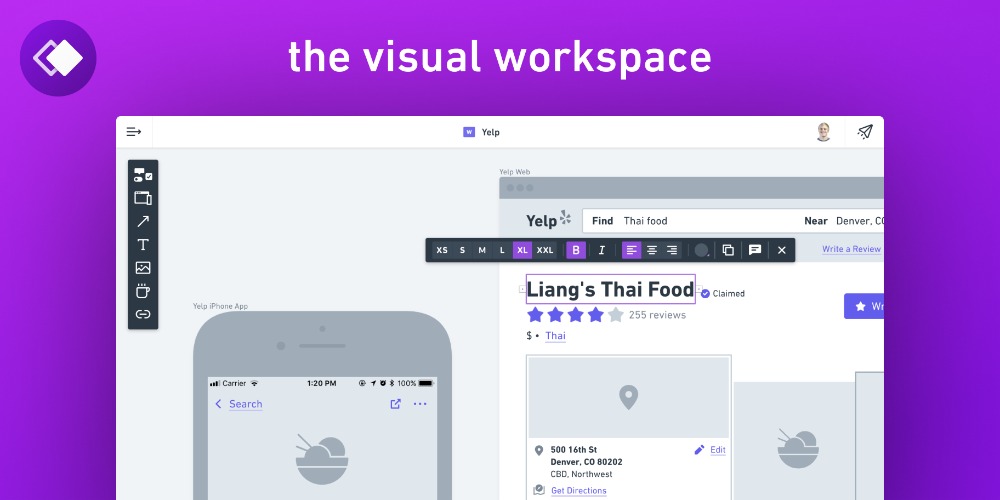
Since each object on the canvas has its own contextual toolbar, Whimsical feels like a more modernized-looking Coggle, and while it’s new-kid-on-the-block status means there’s no integration with other tools (yet?), the upside is that it’s the easiest tool on this list to master. Also, when you’re done making your mind maps (sitemaps, user flow diagrams, etc.), you can begin mocking up designs using their wireframe tools.
All in all, a beautiful-looking tool at a very affordable cost.
Gliffy
- Pricing: $4.99 or $7.99
- Platform: web
- Pros: Atlassian integration and wireframe tools
- Cons: Atlassian integrations cost extra
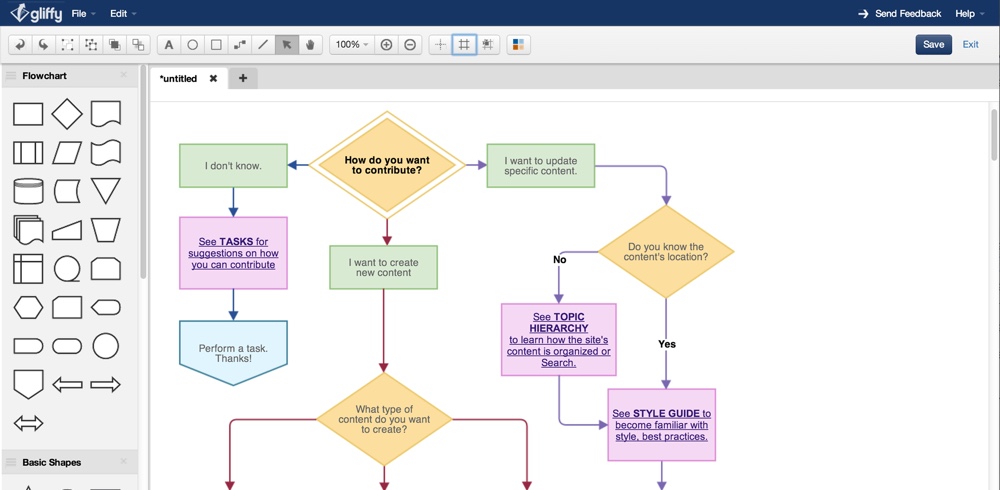
Much like LucidChart and Whimsical, Gliffy is also aimed specifically at designers, and it can be used for wireframing as well. While its core tool doesn’t do anything out of the ordinary, Gliffy does offer both a Jira and Confluence integration to help resolve design bugs in context, communicate effectively, and overall reduce confusion amongst stakeholders.
RealtimeBoard
- Pricing: $0 or $40 (/month)
- Platform: web
- Pros: face-to-face video, real-time collaboration
- Cons: the costs are a little steep in comparison
RealtimeBoard is without doubt the most effective real-time collaboration tool there is, not only making it incredibly easy to mind map as a team of five or more, but to facilitate design sprints as well.

RealtimeBoard is the mightiest whiteboard there is, and with a 5/5 Capterra rating, it’s clear that the high costs are worth it.
One of the top features that sets RealtimeBoard apart is the face-to-face video chat, which is excellent for remote design sprints!
Pen
- Pricing: free
- Platform: Paper
- Pro: you can start right now
- Con: harmful to the environment—so recycle responsibly
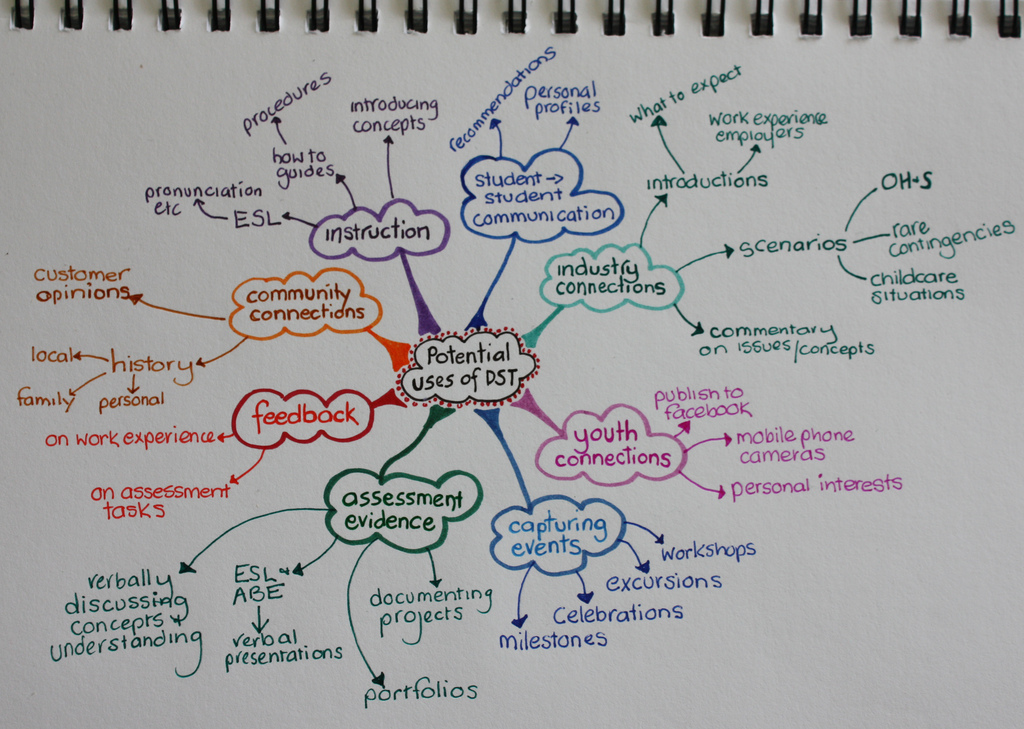
Like InVision Freehand, but … in real life.
InVision Freehand
Or you can use InVision Freehand, which is simply free-for-all sketching.
Conclusion
Choosing the right mind mapping tool largely comes down to your role as a designer. If you’re using mind maps as a way to kickstart a mockup or wireframe, then a tool like Whimsical or Gliffy will take you all the way. Freehand would be better suited to those who enjoy sketching, and RealtimeBoard is excellent for lean and agile teams running design sprints.
Or, if you just want somewhere to organize your ideas, then Coggle, XMind, or LucidChart will do the job just nicely.
